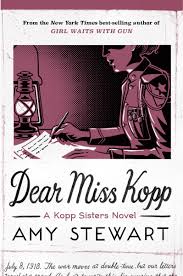I’ve been enchanted by epistolary novels—books told through letters, diary entries, or other documents—since I read Helene Hanff’s 84 Charing Cross Road as a child. That book is not a novel, of course. It’s a compilation of real letters between a writer living in New York just after World War II, and a bookseller in London. The correspondence stretches out over twenty years and offers very little in the way of a plot: the only suspense is whether the bookseller will be able to turn up a nice volume of Tristam Shandy with the Robb illustrations, and (as a kid reading this in the seventies) how such a thing could possibly cost only two dollars.
It was nonetheless a gripping read, one that I devoured seven or eight times. Since then I’ve picked up epistolary novels and collections of letters whenever I come across them. I always thought I might like to write one myself. It seemed like such a pleasant project, to have your characters write letters to one another. I imagined that it would be so much easier than writing a real novel: you could write in short bursts, in language that would be enjoyable but not overly stylish, and your characters would simply have to tell one another what happened, and then reply with sympathy or disapproval or outrage or whatever the situation called for. How hard could it be?
Harder than it looks, that’s what I found out. I’m writing a series that walks the line between historical fiction and crime fiction. There has to be some sort of suspense. But how, exactly, do you keep readers on the edge of their seat when there’s a gap of days or weeks between one letter and the next? When the characters are sequestered in their far-flung corners of the world, never close enough to swing a fist or bestow a kiss, how do you create any real tension between them?
That’s when I went looking for examples of crime fiction told through letters. The genre actually lends itself to the epistolary format, because where there’s a crime, there’s a case file. Crimes generate papers. Reports. Newspaper articles. Depositions. Incriminating diary entries. Confessional letters.
Bram Stoker’s Dracula was, of course, the early, brilliant entry in this field. Through a combination of letters, telegrams, newspaper reports, and journal entries, the horrible truth is revealed. And it’s this sense of discovery—the slow reveal through the shuffling of documents, the paper trail left behind in the wake of a tragedy—that gives us, the readers, the same thrill that historians and archivists must feel when they uncover a cache of historical records. There’s a sense that the story is buried somewhere in the book, and gradually it is uncovered.
Stephen King did just that with Carrie. The letters, the book excerpts, the articles and records—the way those documents are layered into the narrative are both disorienting and disarming, leaving us feeling as though we’ve stumbled into a treasure trove of creepiness (which we have.) The documents also stand as a kind of proof: they make fantastically improbable events seem real and verified.
Dorothy L. Sayers compiled letters, coroner’s reports, witness statements, and news accounts for The Documents in the Case, a 1930 novel about the poisoning of a plant expert and forager. It makes for such a dense and multi-faceted read that I would’ve enjoyed meandering through it as a stack of actual documents.
In fact, there have been authors who experimented with that format. Dennis Wheatley published a few crime novels as dossiers rather than bound books. Murder Off Miami, for instance, first published in 1936 and re-issued in 1980, was sold as a compilation of facsimile documents. The readers are meant to sift through telegrams, crime scene photographs, police reports, and bits of evidence to figure out for themselves what, exactly, went on. I remember my mother poring over the re-issued version in the early eighties, a cigarette in one hand, a beer in the other, never coming to any actual conclusion but taking great satisfaction in the sorting through of documents nonetheless.
It was an intriguing idea, but where, in that pile of papers, is the beating heart of the novel? At some point I turned away from crime fiction and looked at other epistolary novels I’d loved over the years. What drove the action? What kept the pages turning?
Daddy Long Legs, a 1912 novel by Jean Webster, is a charmingly simple story about an orphan girl who is sent to college by an anonymous benefactor. The only stipulation is that she must write a letter once a week to this unnamed stranger. I remembered it as an old-fashioned story about a plucky girl finding her way in the world, but when I picked it up again, I realized that it, too, was a suspense novel. The plucky girl is determined to find out who, exactly, she’s writing these letters to, and what his motive might’ve been in paying for her schooling while keeping his own identity a secret. (You can almost imagine this as the plot of a horror novel, but no—spoiler alert—it’s a love story.)
Even Mary Ann Shaffer and Annie Barrows’ The Guernsey Literary and Potato Peel Pie Society turned out, when I re-read it, to be a suspense novel: the founder of the secret book club, Elizabeth McKenna, has disappeared, and the novel’s protagonist, Juliet Ashton, sets out to find out what happened to her.
For that matter, another favorite of my mother’s back in the day, Nick Bantock’s Griffin and Sabine, was also a mystery in the form of a compilation of actual letters and postcards tucked into a vividly illustrated volume. A man receives a puzzling postcard and begins a correspondence that might be real, or might be his own imagination run wild. Who is Sabine, and will he ever find her?
Is it possible that all epistolary novels are suspense novels? I’m beginning to think so. An epistolary novel has to be more than an accounting of events as documented by the people who witnessed them. They’re little literary games of hide-and-seek, where the truth is hidden between the letters, where the narrators conceal as much as they reveal, where the reader has to decide who to trust.
In Dracula, a telegram from Arthur Holmwood to Quincey P. Morris reads, “Count me in every time. I bear messages which will make both your ears tingle.”
That is the delicious promise that an epistolary novel makes. There’s a wild story to be told, and this time, the characters are going to take over the keyboard and tell it themselves.
*


















